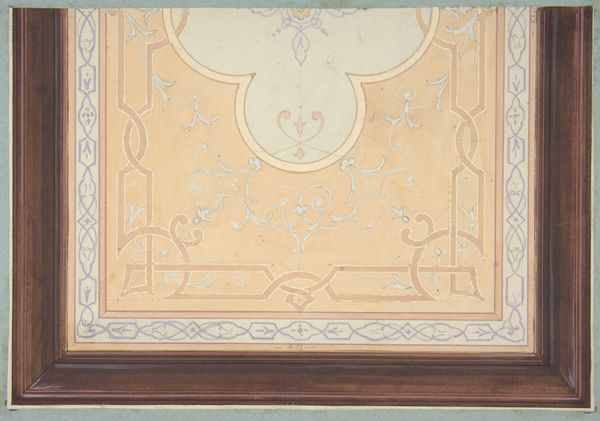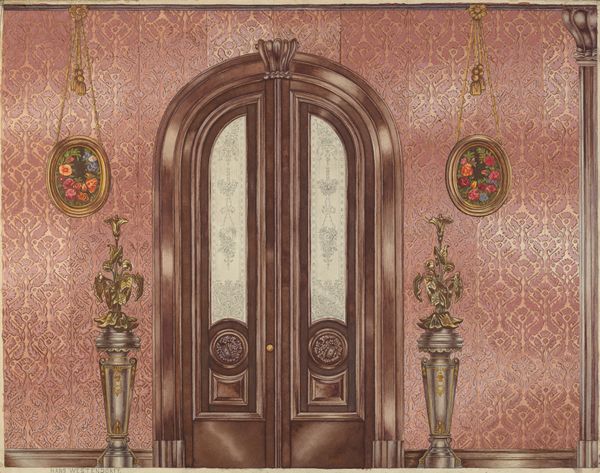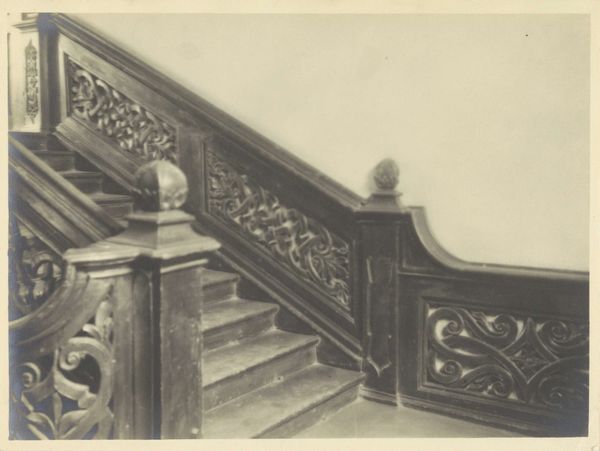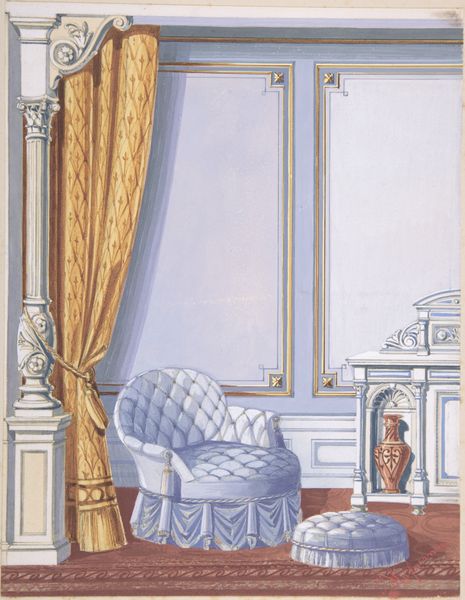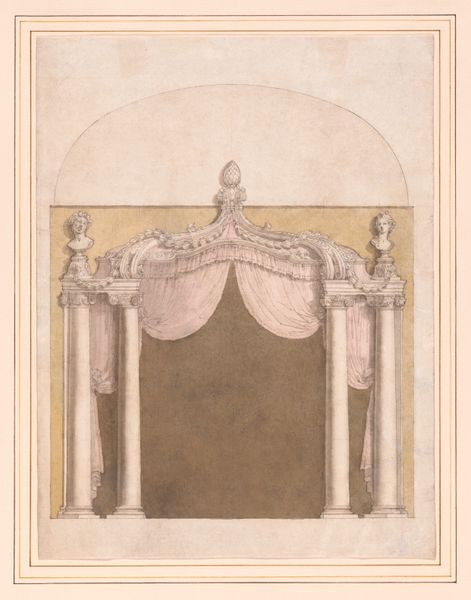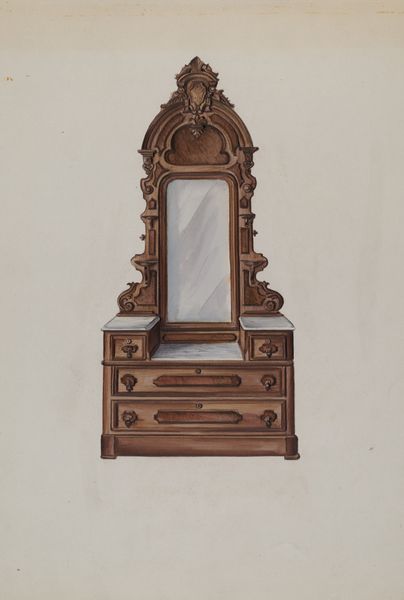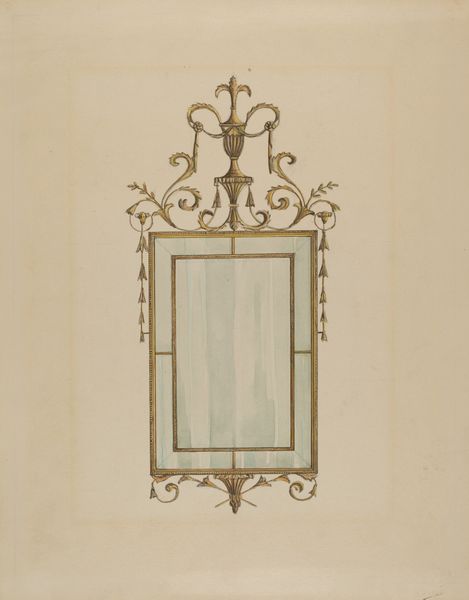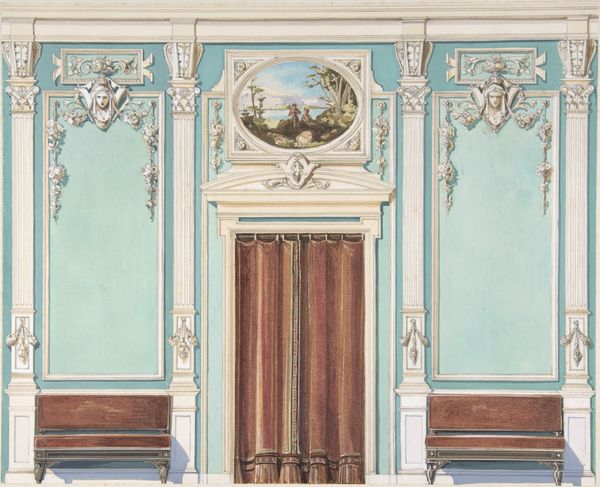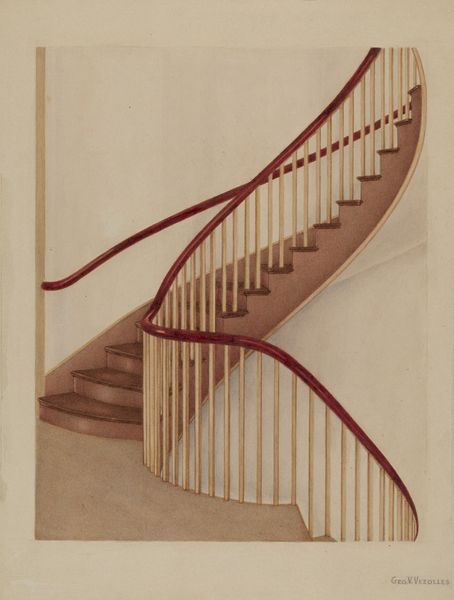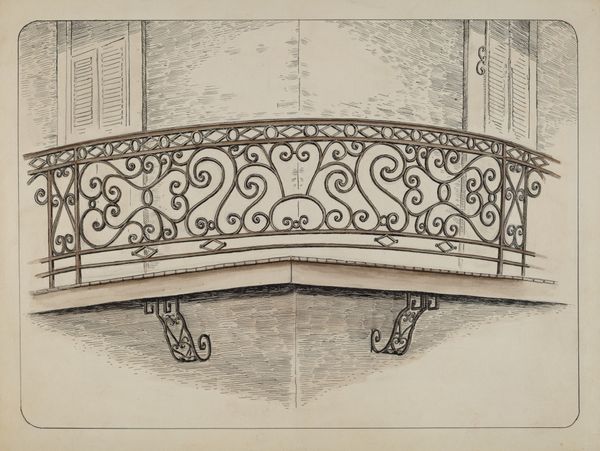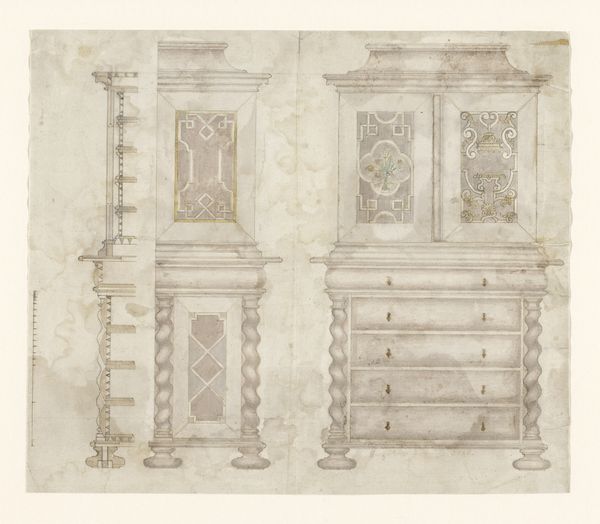
drawing, painting, watercolor
#
drawing
#
painting
#
charcoal drawing
#
oil painting
#
watercolor
#
geometric
#
academic-art
#
watercolor
#
realism
Dimensions: overall: 23.5 x 18.9 cm (9 1/4 x 7 7/16 in.) Original IAD Object: 481/4" high; 12 1/2" wide
Copyright: National Gallery of Art: CC0 1.0
Curator: Here we have "Newel Post," a painting dating from around 1936, by Natalie Simon. It looks like a combination of watercolor, charcoal, and perhaps oils on canvas or paper. Editor: Oh, wow, I am immediately struck by the quiet dignity of it all. It's… intimate, somehow, despite depicting a rather grand architectural detail. Curator: It certainly speaks to the era's interest in capturing details of domestic life. Focusing on something as seemingly mundane as a newel post brings a different understanding to the narrative. The geometric shapes incorporated on it speak to that streamlined, slightly futuristic Art Deco influence that was finding its way into interior design and architecture in the 1930s. Editor: Yes! It makes me think about who walked these stairs. Who touched this post? What conversations, what life, unfolded around it? Curator: That's precisely it. We can also view the post itself as a structural object – a vertical axis of stability and upward momentum, both a physical object and a metaphorical foundation. Editor: I see that. But it also hints at social hierarchies, right? It evokes notions of upstairs and downstairs, privilege, and labor… that stark division in society that art often tries to expose, consciously or not. And the craftsmanship here! Each layer and contour meticulously defined; the soft shadow adding further dimension. Curator: Indeed. Consider that the New Deal era encouraged artistic documentation of everyday American life, although whether this painting directly fits that narrative remains an open question. However, there were often these quiet spaces represented and they usually held significant historical weight, revealing subtle commentaries on class and the built environment. Editor: Looking at it now, I notice an almost ghostly quality. The muted colors contribute, certainly, to that impression. It could easily be a memory, fading, but fondly remembered. The blues seem like the calm water on the threshold into somewhere nostalgic and personal. Curator: It also brings up interesting discussions of space, doesn’t it? By isolating a single feature, the rest of the house is both present and absent. The space that's not painted becomes an equal component to the painting itself, inviting the viewers’ mind into the structure. Editor: Agreed. I see something very calming here… Like holding onto a moment in time. I think there’s an open invitation to connect. Curator: It makes me wonder what kinds of creative expressions can evolve when people encounter these spaces daily? What we decide to create and surround ourselves with reveals parts of us. Editor: Right! It makes you see how every object holds many untold stories... How art allows the mundane to find a special sort of space.
Comments
No comments
Be the first to comment and join the conversation on the ultimate creative platform.

